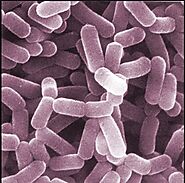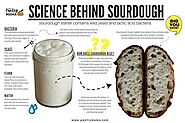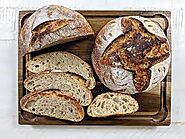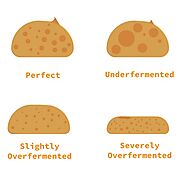-
About
- About Listly
- Community & Support
- Howto
- Chrome Extension
- Bookmarklet
- WordPress Plugin
- Listly Premium
- Privacy
- Terms
- DMCA Copyright
- © 2010-2025 Boomy Labs


Listly by 221003907
Sourdough bread is one of the easiest and delicious breads to make, given that it requires only flour, water and salt. However, from a microbiology point of view it is far more fascinating. Therefore, lets investigate the microbiome that is involved in the production of this type of bread.

This is microscopic image of the lactic acid bacteria that is used to produce sourdough bread. Specifically, this is Lactobacillus sanfranciscensis , which was found in the sourdough made in San Francisco during the late 1800s.

This rod shaped and Gram-positive bacterium was discovered by Kline and Sugihara in 1971.We can also state that it is non-sporulating and non-respiring It is also heterofermentative, which means it can produce lactic acid but can also produce either ethanol or carbon dioxide.
Further reading: https://link.springer.com/article/10.1007/s12602-012-9117-8
https://microbewiki.kenyon.edu/index.php/Lactobacillus_sanfranciscensis

There is no advanced technology that is used when it comes to manufacturing sourdough bread, however, a combination of simple ingredients makes what we refer to as a starter. The starter is prepared and left to ferment over a course of few days and is monitored throughout by adding more of the ingredients when needed. It is here where the Lactobacillus sanfranciscensis works with the yeast to produce lactic acid which provides the tangy taste of the bread.

It is imperative to understand that one of the greatest strengths of Lactobacillus sanfranciscensis is that it has the ability to form a symbiotic relationship with yeast. This is essential for the production of the starter that will eventually make the sourdough bread. Another important fact is that this process of fermenting and having the presence of this bacteria is that it will also improve the shelf life of the bread!
There had been no recorded cases of this species threatening a risk. However, it was investigated that there had been rare cases of other species of Lactobacillus that had caused opportunistic infections either in people who had severe illnesses already or over-consumed dairy products that had L. rhamnosus.
Further reading: https://journals.sagepub.com/doi/abs/10.1177/0956462415590725
https://www.sciencedirect.com/science/article/abs/pii/S016816050700445X

The only potential risks when using any Lactobacillus species is that they are considered to be reserves for antibiotic resistant genes. As they interact with gut microflora, they could possibly transfer resistance genes to other lactic acid bacteria or pathogenic bacteria that are present.
Further reading: https://www.sciencedirect.com/science/article/abs/pii/S016816050700445X

The process of making this bread starts off with creating a starter from flour, water, and salt which would be left to ferment. Now, the question is: how is microbiology involved? What many people do not realise is that many desired properties, such as the distinct taste of the bread, is actually because of the presence of the lactic acid bacteria present in the starter. The most common lactic acid bacteria found is Lactobacillus sanfranciscensis, which is what we will be discussing.

For new bakers, it is quite important to understand that fermentation is something that has to be monitored. Lactobacillus sanfranciscensis can interact with the yeast to give a perfectly baked bread, however, if the starter is not taken care of, the bacteria and yeast may cause underfermentation or overfermentation.